India customers to view on amazon.in
Grooming Techniques for Long-Haired Cats
Long-haired cats are known for their stunning coats, but maintaining their beauty requires regular grooming. Without proper care, their fur can become matted and tangled, leading to discomfort and health issues. In this comprehensive guide, we’ll explore the best practices for keeping your long-haired cat’s coat in top condition.
- Why Long-Haired Cats Need Special Grooming Attention
- Different Types of Long-Haired Breeds and Their Coat Characteristics
- Health and Comfort Benefits of Regular Grooming
- Potential Problems from Inadequate Grooming
- Essential Grooming Tools for Long-Haired Cats
- Brushes and Combs: Finding the Right Match for Your Cat’s Coat
- Dematting Tools and Deshedding Equipment
- Grooming Supplies Beyond Brushes
- Establishing an Effective Grooming Routine
- Determining the Ideal Frequency Based on Coat Type
- Creating a Sustainable Grooming Schedule
- Training Your Cat to Enjoy Grooming Sessions
- Grooming Techniques for Long-Haired Cats: The Complete Brushing Guide
- Section-by-Section Brushing Methods
- Handling Sensitive Areas Like Belly and Tail
- Line Brushing Technique for Dense Undercoats
- Bathing Your Long-Haired Cat Safely and Effectively
- When and How Often to Bathe Different Coat Types
- Step-by-Step Bathing Process
- Recommended Products for Long-Haired Cats
- Drying Techniques That Prevent Matting
- Preventing and Removing Mats and Tangles
- Identifying Problem Areas Before They Become Severe
- Gentle Techniques for Mat Removal
- When to Consider Trimming or Shaving
- When to Seek Professional Help
- Special Grooming Considerations for Different Situations
- Seasonal Shedding Management
- Grooming Senior or Overweight Long-Haired Cats
- Addressing Skin Conditions Through Grooming
- Post-Surgery or Illness Grooming Adaptations
- Common Grooming Mistakes and How to Avoid Them
- Brushing Errors That Can Damage Coat or Skin
- Bathing Pitfalls That Stress Your Cat
- Tool Selection and Usage Mistakes
- Handling Techniques That Build Trust
- Conclusion: Maintaining Your Cat’s Beautiful Coat for Life
- FAQ
- How often should I groom my long-haired cat?
- What are the best grooming tools for long-haired cats?
- How do I prevent mats and tangles in my long-haired cat’s coat?
- Can I bathe my long-haired cat at home?
- How do I dry my long-haired cat after a bath?
- What are some common grooming mistakes to avoid?
- How can I make grooming a positive experience for my cat?
- When should I seek professional help for grooming my long-haired cat?
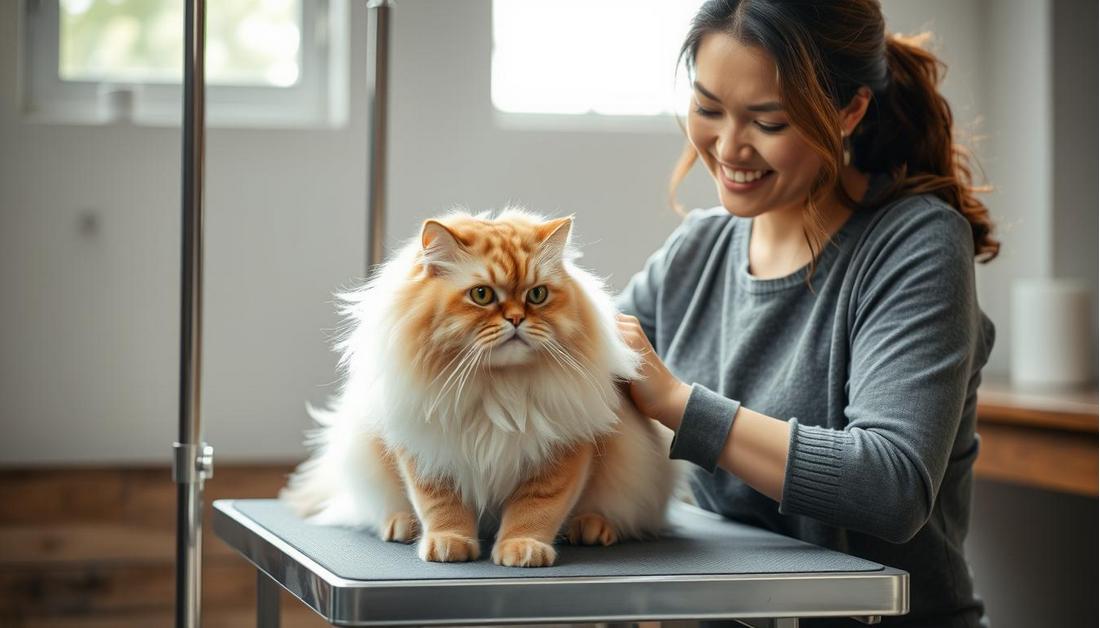
Regular grooming not only improves your cat’s appearance but also helps prevent hairballs and reduces shedding. By using the right cat grooming tools and following a consistent grooming routine, you can keep your long-haired cat looking its best.
Key Takeaways
- Regular grooming is essential for long-haired cats to prevent matting and tangling.
- Using the right cat grooming tools can make a significant difference in your cat’s coat health.
- A consistent grooming routine helps reduce shedding and prevents hairballs.
- Long-haired cat owners should be aware of the best grooming practices to keep their cat’s coat healthy.
- Proper grooming techniques can improve your cat’s overall comfort and well-being.
Why Long-Haired Cats Need Special Grooming Attention
The beauty of long-haired cats is undeniable, but their long, flowing coats necessitate special care to keep them healthy and tangle-free. Long-haired cat breeds come in a variety of types, each with its unique coat characteristics that demand specific grooming approaches.
Different Types of Long-Haired Breeds and Their Coat Characteristics
Long-haired cats encompass a range of breeds, from the majestic Ragdoll to the elegant Persian. Each breed has distinct coat characteristics, such as length, density, and texture, which require tailored grooming techniques. For instance, the Maine Coon has a water-resistant coat that sheds heavily, while the British Longhair has a dense, plush coat that mats easily.
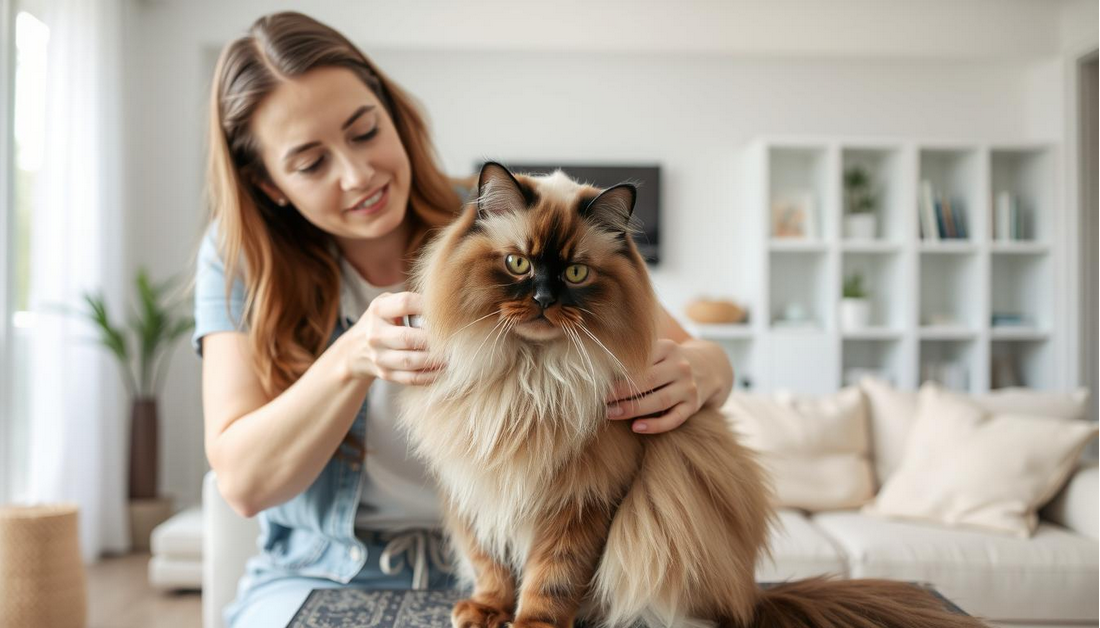
Health and Comfort Benefits of Regular Grooming
Regular grooming is not just about maintaining the appearance of your long-haired cat; it also provides numerous health and comfort benefits. These include:
- Reducing shedding and hairballs
- Preventing matting and tangling
- Distributing skin oils for a healthy coat
- Early detection of skin issues or parasites
By grooming your cat regularly, you can significantly enhance their overall well-being and comfort.
Potential Problems from Inadequate Grooming
Failing to provide adequate grooming can lead to several issues, including matting, tangling, and skin irritation. In severe cases, it can result in painful skin conditions or the need for professional grooming interventions. Regular grooming is essential to prevent these problems and ensure your cat’s coat remains healthy and beautiful.
Essential Grooming Tools for Long-Haired Cats
The right grooming tools can make a significant difference in the health and appearance of your long-haired cat’s coat. With the variety of tools available, selecting the most appropriate ones can be overwhelming, but understanding the role of each tool can simplify the process.
Brushes and Combs: Finding the Right Match for Your Cat’s Coat
Brushes and combs are fundamental to any cat grooming routine. For long-haired cats, slicker brushes and wide-tooth combs are particularly useful. Slicker brushes help remove tangles and mats, while wide-tooth combs are gentle on the cat’s skin and effective for detangling. The choice between a brush and a comb often depends on the cat’s coat type and personal preference.
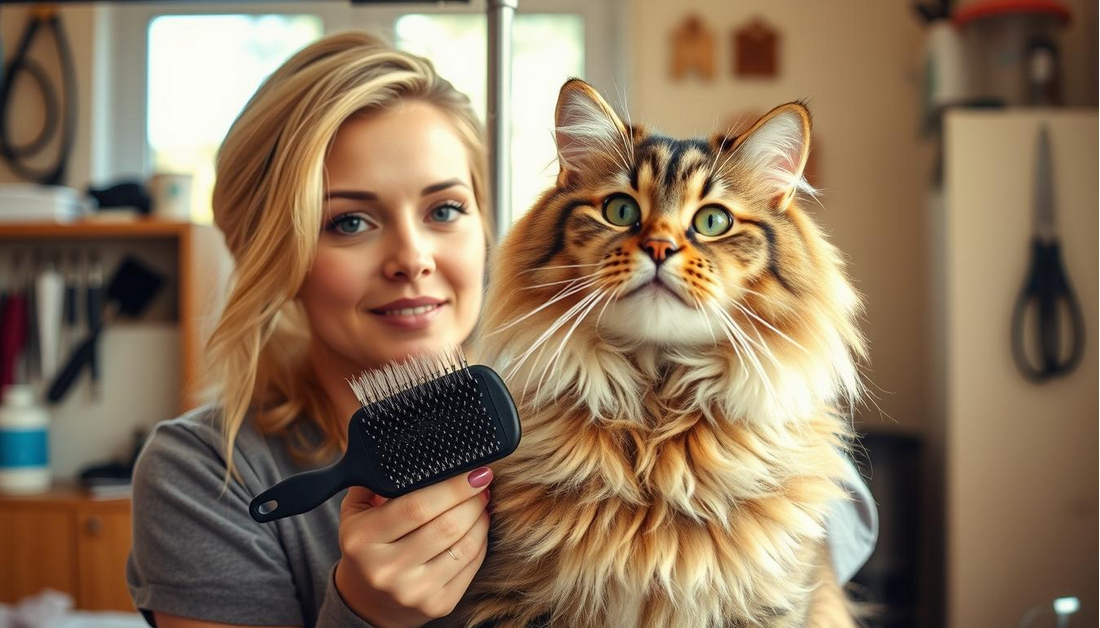
Dematting Tools and Deshedding Equipment
Dematting tools are designed to gently tease out mats without causing pain or discomfort to your cat. Dematting rakes and matting tools with curved blades are effective for this purpose. For shedding management, deshedding tools like Furminators can significantly reduce the amount of loose hair, thereby minimizing hairballs and shedding around the house.
Grooming Supplies Beyond Brushes
Beyond brushes and combs, other grooming supplies play a crucial role in maintaining your cat’s overall health and coat condition.
Shampoos and Conditioners
Selecting the right shampoo and conditioner is vital for maintaining the health and shine of your cat’s coat. Look for products formulated for long-haired cats, and consider factors like skin sensitivity and coat type when making your selection.
Nail Clippers and Ear Cleaning Solutions
Nail clippers designed for cats help prevent overgrowth, which can cause discomfort and health issues. Similarly, ear cleaning solutions are essential for removing dirt and wax, helping to prevent infections. Regular use of these tools as part of a comprehensive grooming routine can significantly enhance your cat’s comfort and health.
Establishing an Effective Grooming Routine
A well-structured grooming routine can significantly improve the quality of life for long-haired cats. Regular grooming not only enhances their appearance but also contributes to their overall health and comfort.
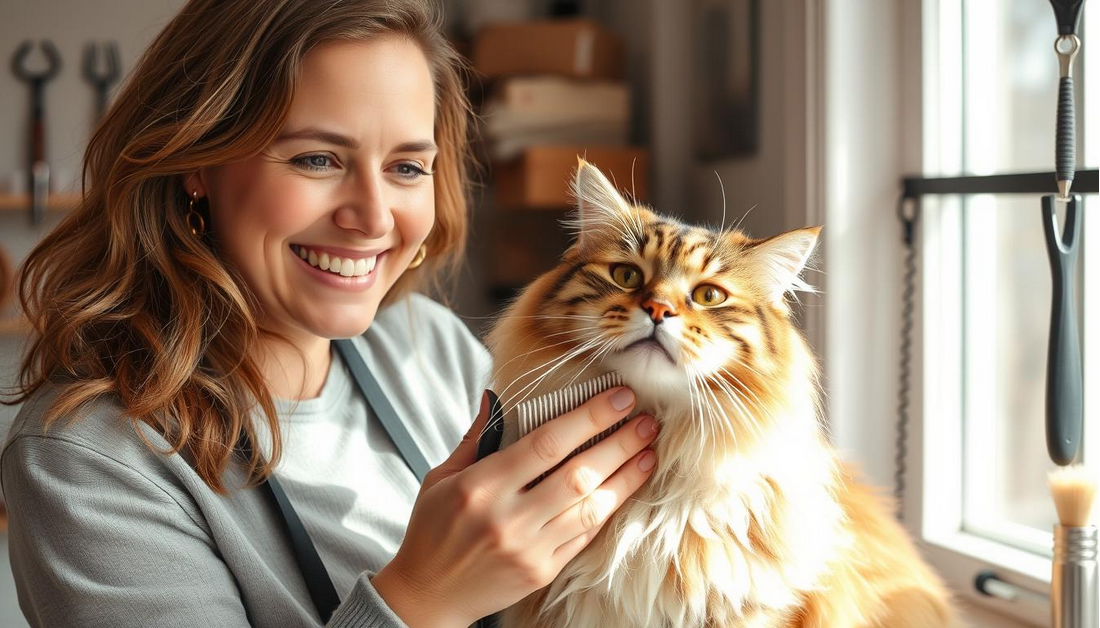
Determining the Ideal Frequency Based on Coat Type
The frequency of grooming sessions depends largely on your cat’s coat type. For instance, cats with thicker, longer coats may require daily grooming to prevent matting and tangling, while those with slightly shorter coats might need grooming a few times a week. Understanding your cat’s specific coat needs is crucial for establishing an effective grooming routine.
Creating a Sustainable Grooming Schedule
To maintain consistency, it’s essential to create a grooming schedule that fits both your lifestyle and your cat’s needs. Start by setting realistic goals, such as grooming your cat at the same time every day or week, and gradually increase the duration as your cat becomes more comfortable with the process. Consistency is key to making grooming a positive experience for your cat.
Training Your Cat to Enjoy Grooming Sessions
Training your cat to enjoy grooming involves patience, gentle handling, and positive reinforcement. Begin with short sessions, rewarding your cat with treats and praise for their calm behavior. Over time, your cat will learn to associate grooming with positive experiences, making the process easier and more enjoyable for both of you.
By determining the right grooming frequency, creating a sustainable schedule, and training your cat, you can establish an effective grooming routine that enhances your long-haired cat’s health and happiness.
Grooming Techniques for Long-Haired Cats: The Complete Brushing Guide
To keep their coat healthy and mat-free, long-haired cats need consistent and proper brushing. Brushing is not just about maintaining their appearance; it’s a crucial aspect of their overall health and comfort.
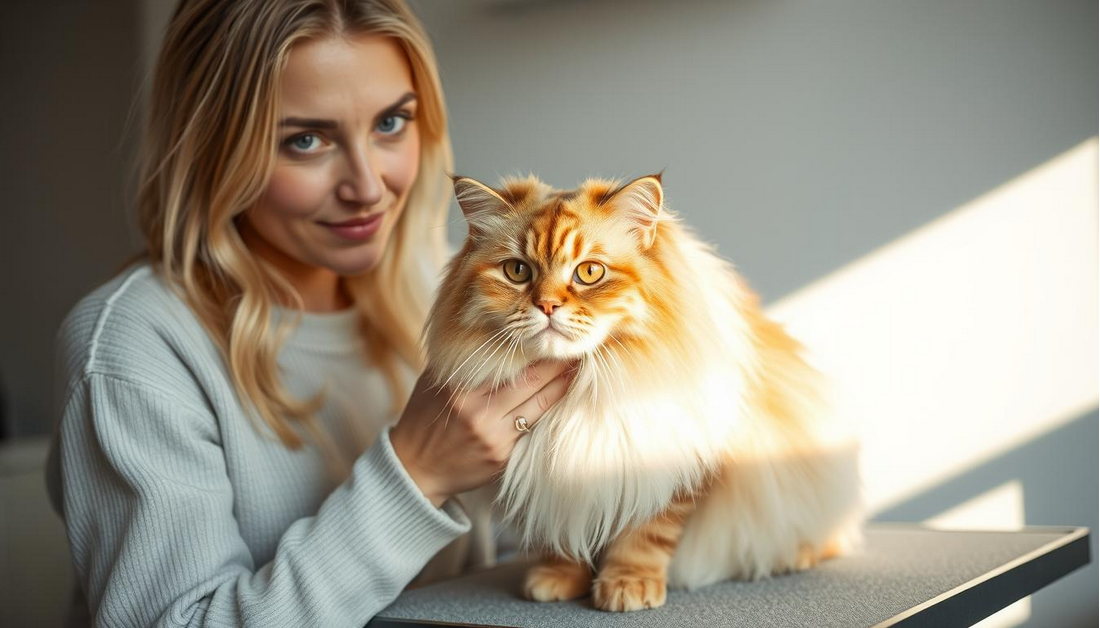
Section-by-Section Brushing Methods
Brushing your long-haired cat section by section ensures that you cover all areas of their coat thoroughly. Start with the head and work your way down to the tail, gently brushing in the direction of hair growth. This method helps in preventing mats and tangles, especially around the neck and behind the ears.
For cats with particularly dense coats, it’s advisable to divide their body into sections and brush one section at a time. This approach not only makes the task more manageable but also helps in reducing stress for both you and your cat.
Handling Sensitive Areas Like Belly and Tail
Areas like the belly and tail are sensitive and require extra care. When brushing these areas, use gentle strokes and be patient. It’s essential to build trust with your cat by moving slowly and giving treats or praise during the grooming process.
The belly area, being particularly sensitive, may require a softer brush or a grooming glove. Always be cautious and watch for signs of discomfort or stress.
Line Brushing Technique for Dense Undercoats
For long-haired cats with dense undercoats, the line brushing technique is highly effective. This involves brushing in small sections, following the line of the coat, to detangle and remove loose hair. It’s a meticulous process that requires patience but is rewarding in maintaining a healthy, mat-free coat.
Using the right tools, such as a slicker brush or a pin brush, can make a significant difference. Regular line brushing not only reduces shedding but also distributes skin oils, promoting a healthy and shiny coat.
Bathing Your Long-Haired Cat Safely and Effectively
Bathing is a crucial aspect of grooming for long-haired cats, requiring careful consideration and preparation. The frequency and method of bathing can significantly impact your cat’s coat and overall health.
When and How Often to Bathe Different Coat Types
The frequency of bathing depends on your cat’s coat type. For instance, cats with a dense undercoat may require more frequent bathing during shedding season to remove loose hair and prevent matting. On the other hand, cats with a silky coat may need less frequent bathing to preserve the natural oils that keep their coat healthy and shiny. Generally, bathing every 4-6 weeks is sufficient, but this can vary based on your cat’s lifestyle and individual needs.
Step-by-Step Bathing Process
Bathing your long-haired cat involves several steps to ensure a safe and effective experience. First, brush your cat thoroughly before the bath to prevent matting. Use a gentle, specifically formulated cat shampoo, and avoid getting water or shampoo in your cat’s ears, eyes, or nose. Rinse thoroughly to remove all soap residue, as leftover shampoo can irritate your cat’s skin.
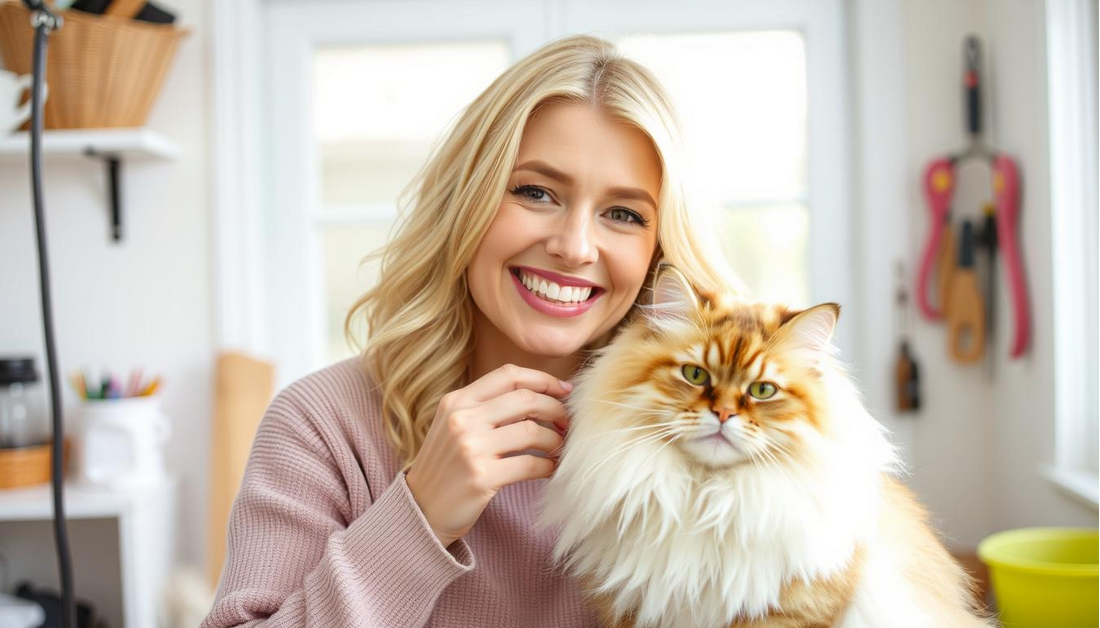
Recommended Products for Long-Haired Cats
Using the right products is crucial when bathing your long-haired cat. Look for shampoos and conditioners specifically designed for cats, as human products can be too harsh. A conditioner can help detangle your cat’s coat and make the brushing process easier after the bath. Some products are formulated to reduce shedding and prevent matting, making them ideal for long-haired breeds.
Drying Techniques That Prevent Matting
After bathing, drying your cat properly is essential to prevent matting. Gently pat your cat dry with a towel to remove excess moisture, then use a blow dryer on a low setting or a specialized cat dryer to dry your cat’s coat completely. Brushing your cat’s coat while drying can help prevent mats from forming. For some cats, air drying might be more comfortable, but be sure to monitor their temperature and comfort level.
By following these guidelines and using the right products, you can make bathing a positive experience for your long-haired cat, keeping their coat clean, healthy, and beautiful.
Preventing and Removing Mats and Tangles
Preventing mats and tangles is crucial for the well-being of long-haired cats, as they can lead to serious skin issues. Mats and tangles can cause discomfort, pain, and even lead to skin infections if not properly managed. Regular grooming is essential to prevent these issues and ensure the overall health of your cat.
Identifying Problem Areas Before They Become Severe
Regular inspection of your cat’s coat is vital to identify mats and tangles early. Areas prone to matting include behind the ears, under the collar, and around the base of the tail. By checking these areas frequently, you can prevent mats from becoming severe.
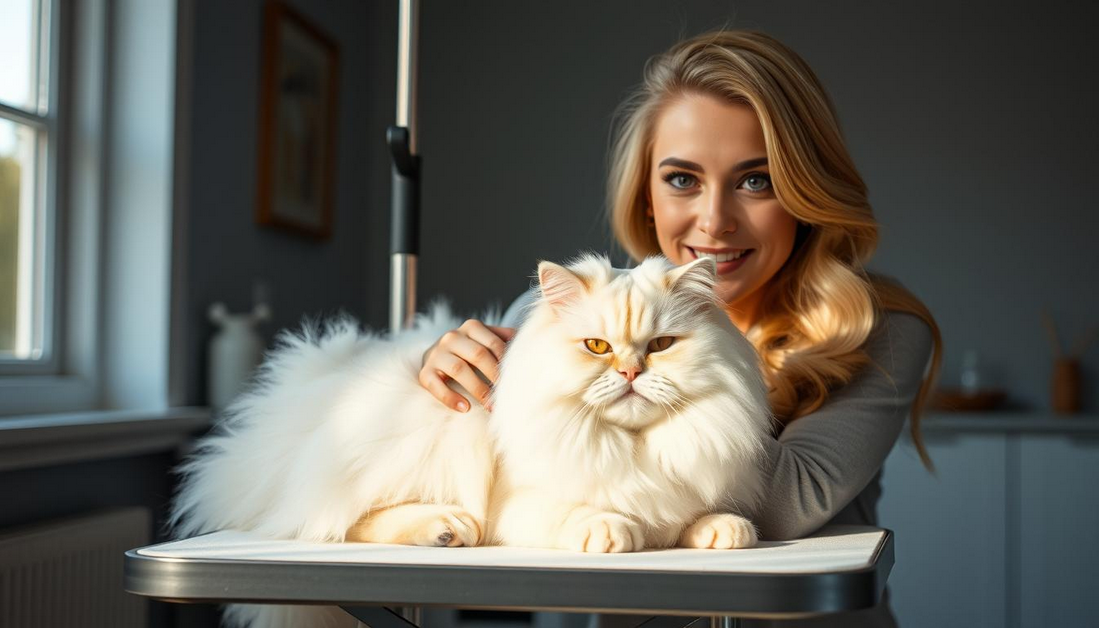
Gentle Techniques for Mat Removal
When removing mats, it’s essential to be gentle to avoid causing pain or discomfort. Start by gently working out the mat with your fingers or a wide-toothed comb. For more stubborn mats, a detangling tool or a mat breaker can be used. It’s crucial to be patient and not to pull on the mat, as this can cause injury.
When to Consider Trimming or Shaving
In some cases, mats can become so severe that trimming or shaving may be necessary. This is particularly true for cats with dense undercoats or those that are prone to matting. Trimming or shaving can help prevent mats from forming and reduce the risk of skin irritation.
When to Seek Professional Help
If you’re unsure about how to remove mats or if your cat’s matting is severe, it’s best to seek professional help. Professional groomers have the tools and expertise to safely remove mats and provide guidance on how to prevent future matting.
| Mat Removal Technique | Description | Best For |
|---|---|---|
| Finger combing | Gently working out mats with fingers | Mild mats, sensitive areas |
| Wide-toothed comb | Using a wide-toothed comb to detangle | Moderate mats, general detangling |
| Detangling tool | Specialized tool for mat removal | Stubborn mats, dense undercoats |
Special Grooming Considerations for Different Situations
Long-haired cats have diverse grooming needs that change with the seasons, age, and health conditions. Adjusting your grooming routine to meet these varying needs is crucial for maintaining your cat’s health and comfort.
Seasonal Shedding Management
Seasonal shedding is a natural process for many long-haired cats. During spring and fall, they tend to shed more as they transition between their winter and summer coats. Regular brushing is essential during these periods to manage the shedding and prevent matting. Using a deshedding tool can be particularly helpful.
Grooming Senior or Overweight Long-Haired Cats
Senior or overweight long-haired cats require extra care during grooming. Their skin may be more sensitive, and their joints might be stiffer, making them more prone to discomfort. Gentle handling and possibly shorter grooming sessions can help. It’s also important to watch for signs of pain or distress.
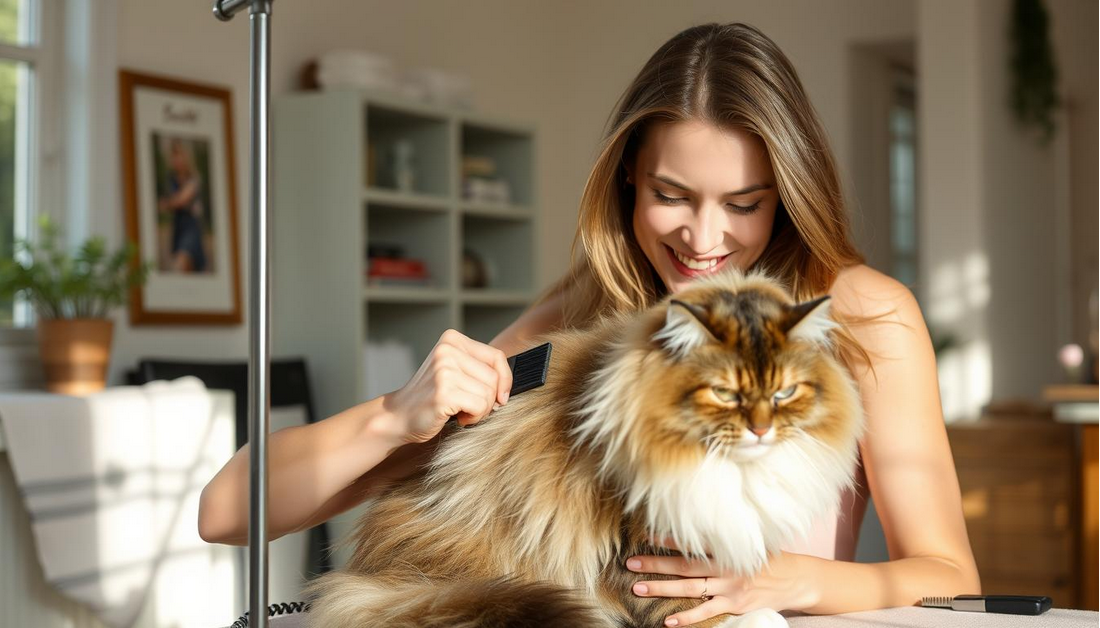
Addressing Skin Conditions Through Grooming
Grooming can play a significant role in managing skin conditions in long-haired cats. Regular brushing can help distribute skin oils, potentially alleviating dry skin. For cats with skin allergies or irritations, gentle grooming products and techniques are recommended.
Post-Surgery or Illness Grooming Adaptations
After surgery or during illness, a long-haired cat’s grooming needs may change. They may require more gentle care and possibly assistance with grooming due to limited mobility or sensitivity. Keeping their coat clean and untangled is crucial to prevent further complications.
| Situation | Grooming Adjustment | Benefit |
|---|---|---|
| Seasonal Shedding | Regular brushing, deshedding tools | Reduces shedding, prevents matting |
| Senior/Overweight Cats | Gentle handling, shorter sessions | Increases comfort, reduces stress |
| Skin Conditions | Gentle products, regular brushing | Alleviates dry skin, distributes skin oils |
| Post-Surgery/Illness | Gentle care, assisted grooming | Prevents complications, aids recovery |
Common Grooming Mistakes and How to Avoid Them
Many cat owners unknowingly make grooming mistakes that can lead to discomfort or health issues for their long-haired cats. Grooming is a crucial aspect of cat care, and doing it correctly can strengthen the bond between you and your pet.
Brushing Errors That Can Damage Coat or Skin
Brushing is one of the most critical components of grooming. However, using the wrong brushing technique or tool can damage your cat’s coat or skin. Avoid using brushes with hard bristles, as they can cause irritation and even lead to hair loss.
- Use a brush or comb specifically designed for long-haired cats.
- Brush in the direction of hair growth to prevent matting.
- Gently work out tangles, starting from the ends and moving towards the roots.
Bathing Pitfalls That Stress Your Cat
Bathing can be a stressful experience for cats, especially if not done correctly. Ensure the water is not too hot or cold, and use a gentle, cat-specific shampoo to avoid skin irritation.
- Prepare everything you need before starting the bath.
- Keep the bath short to minimize stress.
- Dry your cat thoroughly to prevent chilling.
Tool Selection and Usage Mistakes
Using the right grooming tools is vital. Invest in high-quality brushes, combs, and dematting tools designed for long-haired cats. Incorrect tool usage can lead to discomfort or injury.
For example, using dematting tools improperly can cause pain. Always follow the manufacturer’s instructions and be gentle.
Handling Techniques That Build Trust
How you handle your cat during grooming significantly impacts their stress levels and overall experience. Be gentle, patient, and calm to help your cat feel at ease.
“The way we groom our cats can either strengthen or strain our bond with them. Gentle, patient handling is key.”
By avoiding common grooming mistakes, you can ensure a positive grooming experience for your cat, enhancing your relationship and their overall well-being.
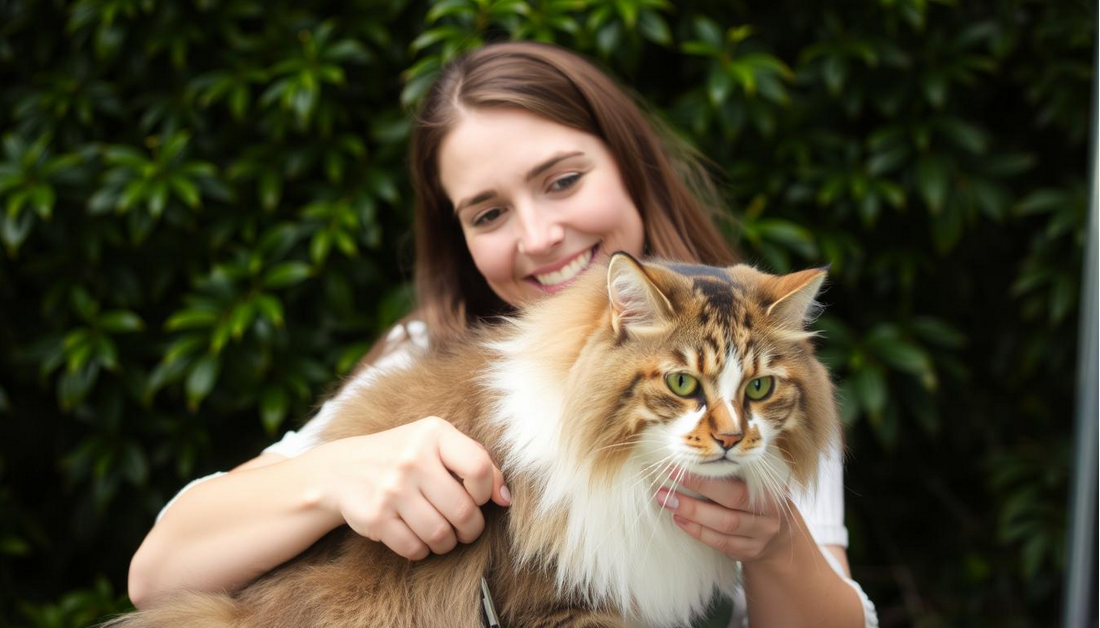
Conclusion: Maintaining Your Cat’s Beautiful Coat for Life
Maintaining your long-haired cat’s beautiful coat requires commitment and the right techniques. By following the guidelines outlined in this article, you can ensure your cat’s coat remains healthy and beautiful for years to come.
Regular grooming is essential for long-term grooming and overall well-being. It not only enhances your cat’s appearance but also strengthens your bond and contributes to their health. With the right cat grooming tips, you can prevent common issues like matting and tangling, keeping your cat comfortable and happy.
Long-haired cat care involves more than just brushing; it’s about creating a routine that works for you and your pet. By choosing the right tools and techniques, you can make grooming a positive experience for both of you. This will help in maintaining your cat’s coat in the best possible condition.
By incorporating these practices into your daily routine, you’ll be able to enjoy a beautiful, healthy coat with your long-haired cat for years to come.







